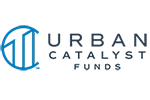506(c) Offerings: No Loss of Exemption if Reasonable Steps Fail to Find Nonaccredited Investors

by Sean Raft, Chief Administrative Officer and General Counsel, Urban Catalyst, in collaboration with the 506(c) Working Group
One of the concerns voiced by some members within the broker-dealer community for the last few years is over the question of whether there is or should be a preference between the 506(b) versus 506(c) offering. While consensus among attorneys and industry leaders regarding the application of the 506(c) offering appears to be building, there remain those that continue to express trepidation.
One of the more significant questions contributing to this fear is whether an issuer of a 506(c) offering, who takes measured, reasonable steps to verify the accreditation status of its investors, would nevertheless lose its Regulation D exemption if it later turned out one of those investors was not in fact accredited?
Let’s start with the rule itself. Paragraph (c)(2)(ii) of Section 506 of SEC Regulation D (17 C.F.R § 230.506) provides that (1) investors in a 506(c) offering must all be accredited and (2) the issuer must take “reasonable steps” to “verify” that each of its investors is accredited. This subdivision further states that “[t]he issuer shall be deemed to take reasonable steps to verify if the issuer uses, at its option, one of the following non-exclusive and non-mandatory methods” provided.
One of the “non-exclusive and non-mandatory methods” described in subdivision 506(c)(2)(ii)(C) permits an issuer to obtain a written confirmation from an authorized third-party verifying the investor’s accredited status. Utilizing this method would “deem” the issuer to have satisfied the “reasonable steps” requirement, as articulated in subdivision (c)(2)(ii).
This is an important point worth repeating: should the issuer follow this step correctly, it is “deemed” to have satisfied the requirement for verifying the investor’s accredited investor status, regardless of whether the investor actually was accredited. The burden on the issuer, therefore, is only to demonstrate it took “reasonable steps;” there is no requirement the issuer itself make any representation that the investor is or was, in fact, accredited. Likewise, the burden of verifying an investor’s accredited status is borne specifically by the third-party verifying the investor’s accredited status, not the issuer.
So, given our understanding of the rule, what happens when an investor is “verified” as accredited by an approved third-party at the time of investment but, later, turns out not to be actually accredited?
With respect to the issuer, the test would most likely be focused on the reasonableness of the issuer’s reliance on the third-party confirmation of verification. If, for example, the confirmation appears legitimate on its face, and was procured through one of the expressly authorized verifiers, then the issuer would have satisfied its legal requirements under Rule 506(c)(2). On the other hand, if verification by the third party were procured through a non-authorized source, or was otherwise defective, then the issuer may be at risk of having violated its requirements under Rule 506(c)(2).
Therefore, an issuer should not lose its exemption under Regulation D if it took “reasonable steps” to verify the accreditation status of its investors, even if it was later discovered that one or more of those investors was not, in fact, accredited.
Indeed, the foregoing analysis is supported by the answer to Question 260.06 of the Compliance and Disclosure Interpretations (“C&DIs”) on the SEC website:
Question 260.06
Question: An issuer takes reasonable steps to verify the accredited investor status of a purchaser and forms a reasonable belief that the purchaser is an accredited investor at the time of the sale of securities. Subsequent to the sale, it becomes known that the purchaser did not meet the financial or other criteria in the definition of “accredited investor” at the time of sale. Assuming that the other conditions of Rule 506(c) were met, is the exemption available to the issuer for the offer and sale to the purchaser?
Answer: Yes. An issuer does not lose the ability to rely on Rule 506(c) for an offering if a person who does not meet the criteria for any category of accredited investor purchases securities in the offering, so long as the issuer took reasonable steps to verify that the purchaser was an accredited investor and had a reasonable belief that such purchaser was an accredited investor at the time of the sale of securities. [Nov. 13, 2013]
The above, of course, requires the issuer to ensure it is taking reasonable steps to verify the purchaser was an accredited investor, such as obtaining written confirmation of verification of accredited investor status from an authorized third-party, as discussed above. In addition, best practices for issuers, as well as for broker-dealers and registered investment advisors, should be considered to help protect against potential problems. Such considerations may include, among other things, precisely who within the broker-dealer or registered investment advisor should be authorized to sign off on the accredited investor verification.
Incidentally, broker-dealers that are correctly performing suitability analysis for their investors may already be independently satisfying the requirements under Rule 506. For now, the good news is that an issuer should not lose its exemption under Regulation D if it took “reasonable steps” to verify the accreditation status of its investors, even if an investor ends up not being actually accredited. And that’s a nice first step.
Sean Raft is the chief administrative officer and partner at Urban Catalyst, sponsor of opportunity zone funds and Delaware statutory trust offerings syndicated as Reg. D 506(c) offerings. In 2020, he was admitted as a member of The Opportunity Zones Working Group, which advises the U.S. Department of Treasury, Internal Revenue Service, the Community Development Financial Institutions (CDFI) Fund, members of Congress and other federal and state agencies on best practices and practical applications for the Opportunity Zone Program.
For more Urban Catalyst news, please visit their directory page.
